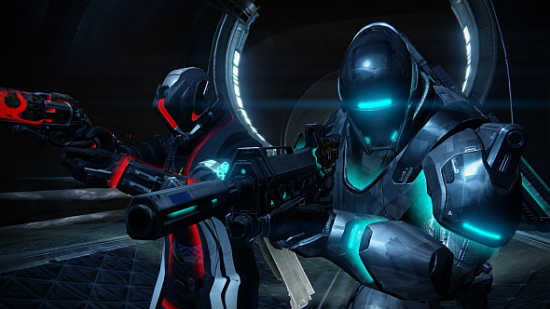Once upon a time, Destiny did not have microtransactions. Even when they arrived, they came not as loot boxes, but emotes you could purchase directly. How did we get from there to here, when leading YouTubers fantasise about the in-game death of real-money vendor Tess Everice – nicknamed Avarice – and the permanent shuttering of her shop? Here is the history of Destiny’s evolving microtransactions.
Here’s how Bungie made recent Destiny 2 controversies worse than they needed to be.
October 2015: Emotes bought directly
After a year of its development being funded solely through the initial purchase and DLC, microtransactions came to Destiny on October 13, 2015. Tess Everis – who merely dispensed promotional items when the game launched – returned to the Tower with a new store: Eververse.
Destiny’s real-money currency, Silver, was added. Its prices were the same in USD as they are today: 500 cost $4.99, 1,000 (+100 bonus) cost $9.99, and 2,000 (+300 bonus) cost $19.99, so think of 100 Silver as equaling $1. For UK customers, Destiny 2’s Silver is slightly more expensive.
Eververse’s first stock was 18 new emotes, which players could buy directly for either 200 or 500 Silver depending on their rarity. In theblog post that announced Eververse, Bungie said “these emotes are completely optional, and won’t impact the action game in any way.” Microtransaction sales were intended “to bolster the service provided by our live team for another full year, as they grow and create more robust and engaging events.”
October 2015: Festival of the Lost introduces loot boxes
Destiny’s first seasonal event, Festival of the Lost, introduced loot boxes to the series with a new class of item called a ‘mystery bag’. It came in two varieties: Treasures of the Lost, which could be bought at Eververse in bundles for 300, 500, or 900 Silver. They contained cosmetic effects, like adding a flock of bats to your respawn, or a wearable mask themed after different Destiny characters.
The second bag, Gifts of the Lost, was the gameplay equivalent: it could only be obtained through a quest and dropped the same items, except its masks expired after the event. They looked the same as the paid masks, and neither had any perks or stats. Eververse also got three new Halloween-themed emotes.
Everything was silly cosmetic fun, and Eververse’s only real distinction was that its masks were permanent. You could even ‘upgrade’ a temporary mask, if you wanted to keep it, by scrapping an unwanted permanent one. All in all, the first Festival of the Lost went down pretty well.
December 2015: the SRL record book
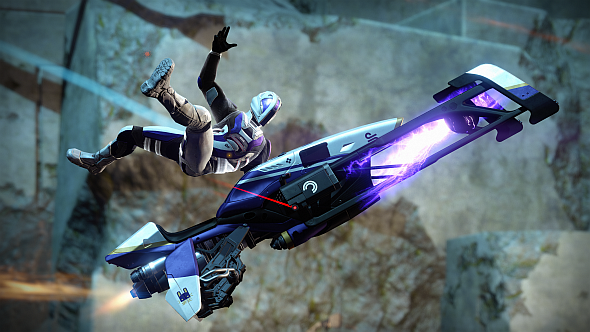
For Destiny’s Christmas 2015 event, Bungie did what fans had been asking for since the game launched and introduced the Sparrow Racing League (SRL). Six players could race their Sparrow jetbikes on two tracks, either following the course for speed boosts from gates, or taking cleverly designed shortcuts.
Alongside a new emote for 500 Silver, two new mystery bags appeared at Eververse: the custom horn kit (100 Silver, containing a Sparrow horn), and the Sparrow toolkit (500 Silver, guaranteeing a non-duplicate legendary Sparrow).
Participation in SRL was technically free, but to get the most out of it, you had to purchase a ‘record book’ at Eververse. This would track your achievements while racing, through which you would unlock cosmetic rewards such as a new armour set, an emblem, a shader, and a Sparrow. There was no way to earn this gear without the record book, which cost 1,000 Silver. Many players considered this to be rather a lot, but the outcry was still relatively modest.
April 2016: armour sets sold for the first time
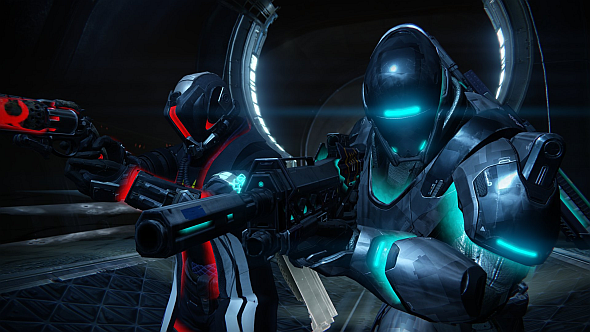
The April 2016 update (2.2.0) added a new class of loot box called Sterling Treasure. These included armour sets for the first time: the Desolate set, which made you look like a Taken, and the Spektar set, which could accept neon glowing ornaments called ‘chroma’. They were some of the best-looking gear in Destiny, which is not nothing in a game where dressing up is a large part of the fun. Widespread anecdotal evidence suggested Desolate gear had a low drop rate.
This was also the first time Destiny put a toe across the sacred line of affecting gameplay through microtransactions, in that armour alters your in-game power. To avoid accusations of pay-to-win, Bungie had it drop at very low power, just as it does in Destiny 2. Players had to infuse loot box armour with gear earned through gameplay to make it useful.
Sterling Treasure guaranteed one drop from either of its two armour sets, which is not true of Destiny 2’s Bright Engrams. You could earn three Sterling Treasures through gameplay per week, per account (not character). Their prices at Eververse were slightly more generous than the first Festival of the Lost: one box cost 200 Silver, three cost 500, and five cost 800. This pricing structure would continue thereafter.
September 2016: ornaments and Silver Dust
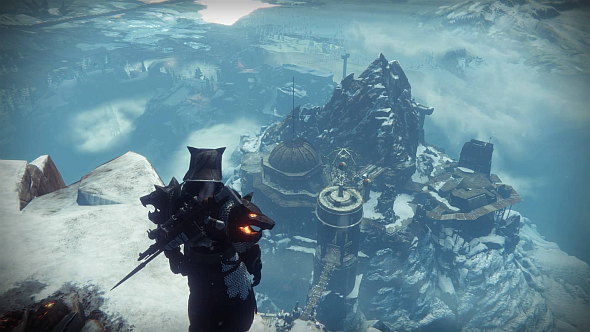
After the introduction of Chroma, ornaments were expanded in Destiny’s second major expansion, Rise of Iron. The DLC came with a new record book, for free, that unlocked an armour set through gameplay. This armour could be customised with cool flame effects by equipping ornament tokens. Several Exotic weapons also got reskins (called ornaments), which Xur started selling.
Ornaments cost Silver Dust, Destiny 1’s equivalent of Bright Dust, to apply – it dropped from loot boxes, or from scrapping unwanted cosmetic items (which, generally, also dropped from loot boxes). Prices were pretty steep compared to the drop rate, leading to an outcry that forced a response from Bungie.
Radiant Treasure replaced Sterling Treasure as the game’s active loot box – these guaranteed an Exotic ornament, and had a chance to drop ornament tokens for your new armour. As with Sterling Treasure, there were three gameplay sources per week, per account, and could be bought at Eververse for the same prices.
October 2016: Iron Engrams sell old prestige gear
Roughly a month after Rise of Iron, Lord Saladin started selling Iron Engrams (these were in addition to Radiant Treasure at Eververse). They contained random pieces of old Iron Banner armour, and were ostensibly a cool way for players to earn good-looking gear that was otherwise no longer available. Again, it dropped at low power.
The difference: Iron Engrams cost Silver Dust. Since loot boxes were a key source of this, players had an avenue to acquire old Iron Banner gear with real money.
It was also noteworthy that Iron Banner applied players’ gear level advantages in the original Destiny, and was thus an endgame activity with some degree of prestige attached. Sure, it was a step below the raid and Trials, and Iron Engrams didn’t drop current Iron Banner armour, but they did let players buy gear that they would previously have had to earn.
October 2016: Festival of the Cost and its drop rates
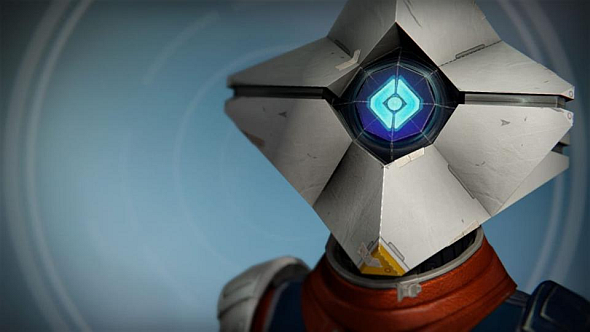
Destiny’s second Halloween event was felt to be much greedier than its first, and saw one of the biggest backlashes (yet) against the game’s microtransactions.
Temporary masks could once again be earned through quests, but there was no longer any way to make them permanent. For that, you needed Treasures of the Lost, which returned to Eververse at the established prices. They included cool new cosmetics, the highlights of which were new Exotic weapon ornaments and a Ghost in a ghost outfit.
As ever, players could earn a couple of boxes through gameplay, but in a time-limited event it was simply not possible to get everything this way. Even if you chose to get your wallet out,reports of cruel drop rates suggested you’d have to part with a lotof its contents to get some of the most appealing new stuff.
December 2016 to August 2017: relative stability
This period saw two further events – the first Dawning in December, and the Age of Triumph from March onwards – which combined the lessons of the so-called ‘Festival of the Cost’ with the established loot box format to meet a broadly positive reception. Each event introduced a new box which could be earned through gameplay three times per week, per account, or which were sold in bundles at Eververse for 200, 500, or 800 Silver.
The biggest development during this time was the Silver Dust kiosk, which was added to the Tower during the Dawning. Here, players could buy past Eververse loot directly for Silver Dust, which gave a new avenue to get some desirable stuff.
September 2017: one-use shaders, mods in loot boxes
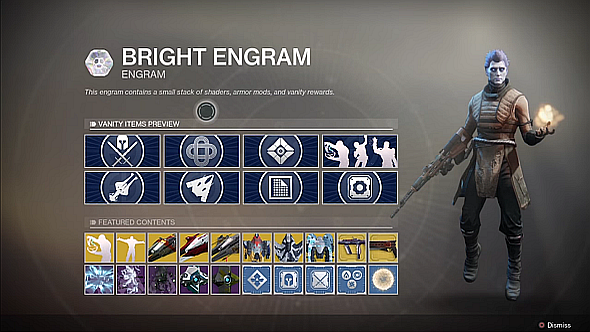
The launch of Destiny 2 saw an overhauled and streamlined Eververse. Loot boxes became Bright Engrams, and would drop at every XP level after 20. They could also be purchased at Eververse – one for 200 Silver, three for 500, or five for 800.
They contain shaders, which are now single-use consumables rather than being permanently unlocked, along with low-power armour, emotes, Exotic weapon ornaments, Sparrows, ships, and cosmetic effects for transmatting. Dismantling unwanted cosmetics drops Bright Dust, as can the Bright Engrams themselves.
Bright Engrams took another step into affecting gameplay by dropping blue mods, which provide stat boosts, albeit very minor ones. They are superseded by purple mods, which add to your power level, but a stack of three blues can be crafted into a purple. Some Sparrows and Ghost shells have perks that benefit gameplay, but none – initially – were significant enough to provoke an outrage.
Changes to the surrounding game also elevate Bright Engram contents. Endgame activities, such as the raid and Trials, no longer drop an associated ship or Sparrow. Balancing changes to weapons, armour, and endgame rewards make cosmetic distinctions more prominent by comparison – a deliberate choice by Bungie. Shaders can now be applied to guns, most of which are battle-damaged and worn by default.
Destiny 2 also launched with a hidden system that reduced XP gains if players accrued them too quickly, most notably by grinding public events. Bungie said this was to balance XP rewards across high and low investment activities, but the consequence was that the easiest gameplay source of XP – and thus, loot boxes – was drastically slowed down without players’ knowledge.
December 2017: gameplay-affecting Ghost Shells
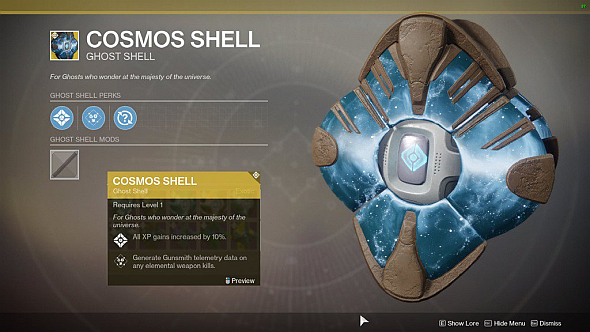
The Curse of Osiris DLC and the start of season two saw a refresh of the Bright Engram and an injection of new cosmetic gear to the game.
A lot of this new gear – half of it, by Forbes’s estimate – is in the Bright Engrams rather than awarded through gameplay. No clear line has been crossed, but the community feeling is that, in a game that puts such emphasis on your character’s look, too much of your aesthetic options are now in loot boxes.
That also includes items with interesting lore tabs and a significance in Destiny’s wider universe, such as ships belonging to Osiris, Saint-14, and Kabr. In the original game, these would drop from related activities, rather than a random loot box without any narrative context. The new Bright Engram also includes Exotic Ghost Shells for the first time, which grant gameplay benefits: one gives a 10% XP boost, one increases Glimmer gains, and another increases loot from all public events.
December 2017: too much Eververse in The Dawning
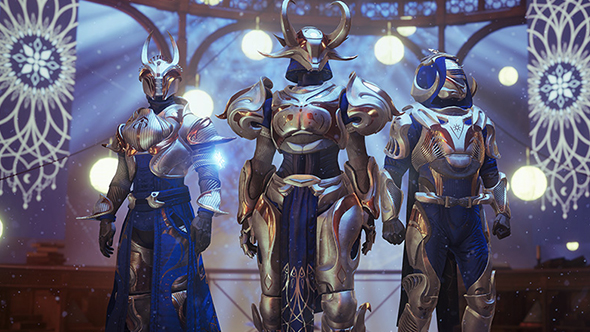
Two weeks after season two begins, the Dawning launches, adding a second cosmetic engram with yet another slew of attractive, mostly cosmetic gear. Unlike loot boxes in many other games’ seasonal events, Dawning Engrams cannot be acquired by leveling up – only through Eververse or through event quests, which are account-based rather than character-based.
Even though this follows the same broad pattern as Destiny 1’s loot boxes, it became a big part of the general outcry against the Dawning, perhaps because Destiny 2’s new players were expecting Dawning gameplay drops to be character-based, like your weekly milestones.
You can buy one piece of Dawning armour directly when each comes on rotation at Eververse, but prices range as high as 1,200 Bright Dust – a huge amount compared with the rate at which you can earn dust (without paying for it). Some Dawning Ghosts also share the same gameplay-affecting perks as those in the season two Bright Engram.
February to March 2018: a climbdown?
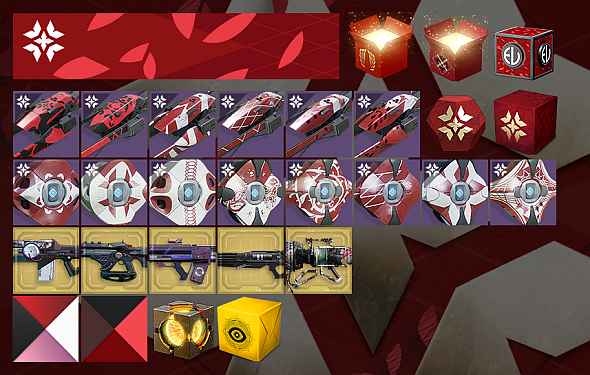
After the backlash against The Dawning, Bungie promised a new approach for monetisation in Crimson Days and season three. Both Crimson Engrams and Bright Engrams will drop when you level up, and Crimson Engrams will be strongly weighted to drop non-duplicate rewards.
During season three and Crimson Days, there will be more “direct purchase options,” enabling players to acquire specific gear rather than a random loot box roll. More of the new season three cosmetics will be put into activity reward pools, including Sparrows, Ghosts, and ships, rather than having all of these locked behind the Bright Engram.
If this goes through as promised, it will probably be the most significant climbdown in Destiny’s history of microtransactions, though that may only be because they have ratcheted up quite aggressively in Destiny 2.
The future: Eververse linked with progression?
In early December 2017, Bungie were seen advertising for a ‘senior progression designer’, whose job would be to “craft a long-term vision for the Eververse and its presence in the Destiny IP.” Another line in that ad said the successful candidate would “create sustainable player progression and chase through Destiny 2’s Bright Engram.”
Linking progression to Bright Engrams, and mentioning a long-term vision for the store at which they are purchased in the same ad, led to severalReddit threads making despairing predictions for a future Destiny in which the act of progression itself is monetised.
That’s the history of Destiny’s microtransactions to date, with a short glimpse into the future. We’ll update this post with future developments.
